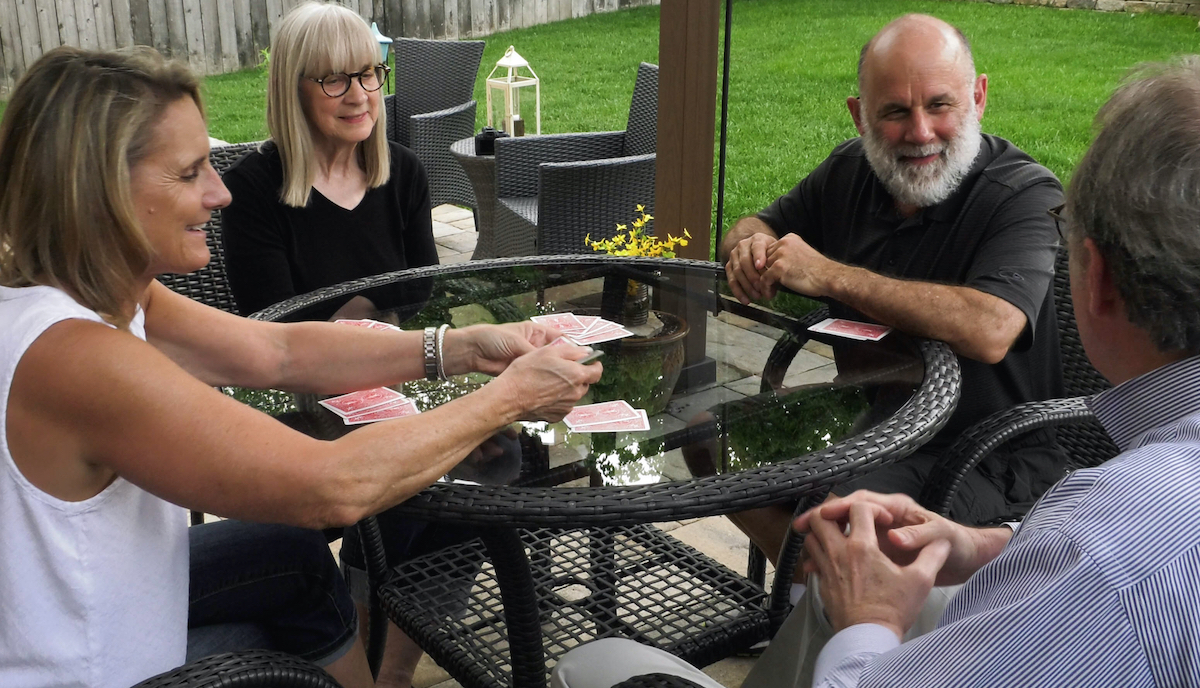
Strong social connections could help preserve memory and improve quality of life for older adults, suggests new research published today in the journal Frontiers in Aging Neuroscience.
Investigators from Ohio State University found that mice housed in groups had better memories and healthier brains than animals that lived in pairs.
Although the research was conducted using mice, lead researcher Elizabeth Kirby, Ph.D., told McKnight’s Senior Living that the findings likely apply to humans.
“While we can never be 100 percent sure that studies in an animal model like mice will translate to humans, this study was done to help fill a gap that research in humans can’t fill very well,” she said. “We know that in humans, there is a strong association between having a larger social network and protection from memory decline with age. But it is difficult to tell whether having more friends protects the brain from problems with age or if having problems with memory makes people withdraw from their friends.”
Traditional studies involving humans often call for comparing outcomes in two participating groups — with members of one group living life without intervention, for instance, and with members of another group being exposed to the particular factor or conditions being investigated. Such a set-up wouldn’t have been possible in humans in this case, Kirby said. But it made sense in mice.
“Normally, we would try to figure this out by taking a group of humans and assigning some of them to have lots of social contacts and others to have very little,” she said. “As you can imagine, this is difficult to do when it comes to dictating how many friends people have. With mice, however, we can easily control the size of their social network as they age by controlling how many roommates they have in their cage.”
Housed in pairs or groups
Kirby and colleagues studied mice that either lived in pairs or were housed with six other roommates for three months. During the experiment, the mice were 15 to 18 months old, which they said is a time of significant natural memory decline in the rodent lifespan.
The researchers found that, in memory tests, the group-housed mice fared better.
In one test, for instance, mice were challenged to recognize that a toy, such as a plastic car, had been moved to a new location. A mouse with good brain health will gravitate toward the novelty of something that has been relocated.
“The group-housed mice were much better at remembering what they’d seen before and went to the toy in a new location, ignoring another toy that had not moved,” Kirby said.
In another, maze-based memory test, the mice were placed on a well-lit round table with holes, some of which led to escape hatches. Their natural tendency under such circumstances is to look for the dark, unexposed and “safe” escape routes.
In this test, the researchers found that both groups of mice improved their escape-route search strategies with practice, but the “couples” mice didn’t get faster at the test when it was repeated over the course of one day, whereas the group-housed mice improved with each trial.
“They seemed to try to memorize where the escape hatches are and walk to them directly, which is the behavior we see in healthy young mice,” Kirby said. “And that tells us that they’re using the hippocampus, an area of the brain that is really important for good memory function.”
In humans, mice and many other animals, brain function in the hippocampus markedly declines with age, even in the absence of dementia, according to the researchers. Exercise and social ties are known to preserve memory in this region in people, Kirby said.
Clues from the brain
After the housing experiment, the investigators examined the brain tissue of the mice and found increased inflammation in the pair-housed mice, biological evidence of eroded cognitive health. The group-housed mice had fewer signs of this inflammation, however.
The researchers also looked for evidence of new neuron growth in the hippocampus and found no differences between the groups.
“When you combine all that human data with our finding that mice living in a larger social network had better memory and less inflammation in their brain than mice living as couples, it seems very likely that social connections protect your brain from aging,” Kirby said.
What it means for senior living
The results of the mouse study suggest programming and marketing opportunities for senior living communities.
“These findings suggest that any kind of living arrangement that helps people be part of a larger community and keep up regular social interactions as they age could be beneficial for the brain,” Kirby said. “If I were looking into long-term housing for myself or a loved one after retirement, I would certainly look at how social activity and involvement are facilitated by the environment. Staying socially connected also has a strong link to longevity, too, so keeping up your social network could help you live both longer and stay sharper.”
One way that senior living communities could help residents capitalize on the findings is by offering group exercise opportunities, Kirby said.
“In addition to helping keep you healthy enough to go out and enjoy time with friends, exercise itself protects your brain as you age,” she said. “Exercising in a group would combine those great brain and body benefits of exercise with the benefits of social interaction. Plus, many studies show that people who exercise in groups are more likely to stick with it than those who exercise alone.”



